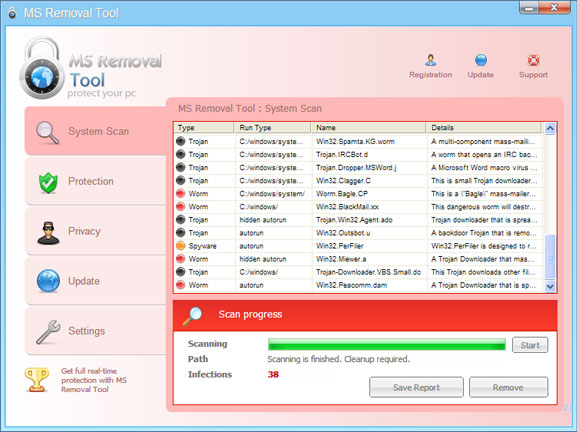

- #HOW TO OPEN MALICIOUS SOFTWARE REMOVAL TOOL INSTALL#
- #HOW TO OPEN MALICIOUS SOFTWARE REMOVAL TOOL WINDOWS 10#
Stay ProtectedĪlthough the Malicious Software Removal Tool helps to eliminate specific malicious software from your PC, Microsoft stresses that it isn’t a replacement for antivirus software.
#HOW TO OPEN MALICIOUS SOFTWARE REMOVAL TOOL INSTALL#
Likewise installing a Windows Update-go to Settings > Update & security > Windows Update > Check for updates and install any available update on the page. Running the Windows System File Checker (SFC) or the Check Disk Utility will also reinstall a genuine mrt.exe file on your PC. If you deleted the file because it’s problematic or ingenuine, you should download and reinstall an official copy of mrt.exe from the Microsoft website. However, we recommend having the tool on your computer for extra security. Likewise, delete the file if it isn’t signed by Microsoft, or if your security software flags it as malicious.Īs long as you have a dedicated anti-malware tool or virus scanner, you can do without the Windows Malicious Software Removal Tool. You should remove the Malicious Software Removal Tool from your computer if mrt.exe is outside the system32 folder. Go to the Details tab, right-click on MRT.exe and select Open file location on the context menu. Press Ctrl + Shift + Esc to launch the Windows Task Manager.Ģ. Follow the steps below to check the location mrt.exe file on your computer.ġ. If the file is located elsewhere, then it’s probably a virus or malware.
#HOW TO OPEN MALICIOUS SOFTWARE REMOVAL TOOL WINDOWS 10#
The executable file of the Malicious Software Removal Tool is housed in the system32 folder (C:\Windows\System32) on Windows 10 devices. The techniques listed below will help you determine if the mrt.exe file on your PC is genuine or a fraudulent imitation. However, if mrt.exe is always active when you check the Task Manager, a virus could be camouflaged as the Malicious Software Removal Tool. It is safe and won’t cause any problem on your computer. The Malicious Software Removal Tool is built into the Windows operating system by Microsoft. Should the problem persist, the software removal tool is probably infected and unsafe. If the process reappears in the Task Manager and continues to abnormally consume CPU and memory footprint, restart your PC and check again. Yesterday, Microsoft added a number of new virus and malware definitions to the Malicious Software Removal Tool, including Win32 / Vawtrak, Win32/Critroni and Win32 /Kasidet.


 0 kommentar(er)
0 kommentar(er)
